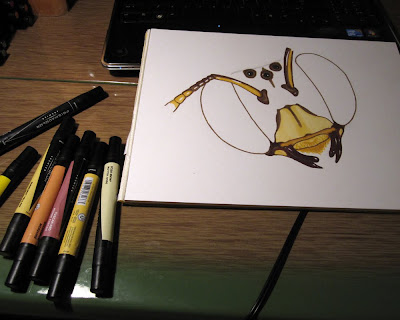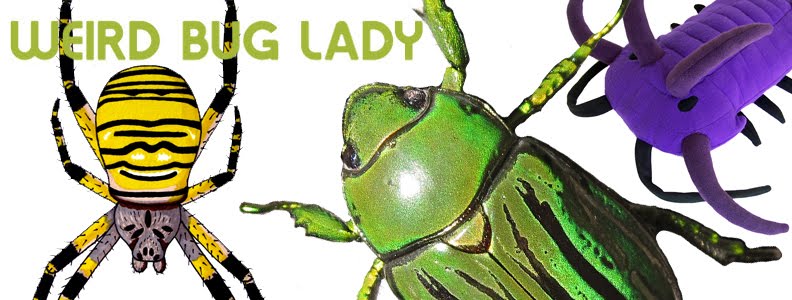
One of my favorite insect orders is Mantodea - how could it not be? Praying mantids are charismatic, and easily anthropomorphized. Their raptorial forelegs of course add an air of danger and mystery. This little guy was found in a desert wash in southeastern AZ. I don't know the species, anyone have any ideas?
Now, some people might take issue with the order Mantodea. Taxonomy is a dynamic field, even at higher levels, and insect orders are continually being shuffled around as new research unfolds. Mantids are most closely related to cockroaches (Blattaria) and termites (Isoptera), and the three orders are grouped together into Dictyoptera. Now, this may be considered either a superorder or an order, depending if you're a lumper or a splitter. In turn their closest relatives are the walkingsticks (Phasmida), rockcrawlers (Grylloblattodea) and heelwalkers (Mantophasmatodea).
Taxonomic changes may be frustrating, especially at lower levels - we get very attached to familiar species names, for example. Nomenclature rules are very strict, and only broken for special cases (like when it was found
T. rex actually had an earlier name which by the rules would be the correct name, there was a big fight to keep
T. rex). In recent news, there has been a debate over the reorganization of the
Drosophila genus, of which the famous lab fruit fly is a member. In order to make the least amount of name changes to most accurately organize the flies, several (including
D. melanogaster) would be moved into the genus
Sophophora. Scientists have been in an uproar - though taxonomy is important for understanding evolutionary relationships, it could cause considerable confusion in the literature. This all was happening in April of this year, and I have yet to find if there was a satisfactory conclusion - ITIS still has
D. melanogaster as the valid name, and wikipedia has
Sophophora only as a subgenus.
I am fascinated by taxonomy and systematics, I guess that is part of my control-freak nature and desire for organization. My adviser suggested I could describe a new species of moth for independent study credits next semester - I'm going to be all over that!
 I had been slowly dying of jealousy ever since my roommate let me try using some of her Prismacolor markers. My sharpie loyalty went right out the window at that moment, and it was only a matter of time before I would get my hands on my own set. Besides, I want to get into some more serious science drawing, and I might as well get some better tools, right?
I had been slowly dying of jealousy ever since my roommate let me try using some of her Prismacolor markers. My sharpie loyalty went right out the window at that moment, and it was only a matter of time before I would get my hands on my own set. Besides, I want to get into some more serious science drawing, and I might as well get some better tools, right?

 The final photo does not do justice to the color mixing I did in the eyes - I'll take a better photo tomorrow in the sunlight.
The final photo does not do justice to the color mixing I did in the eyes - I'll take a better photo tomorrow in the sunlight.



































